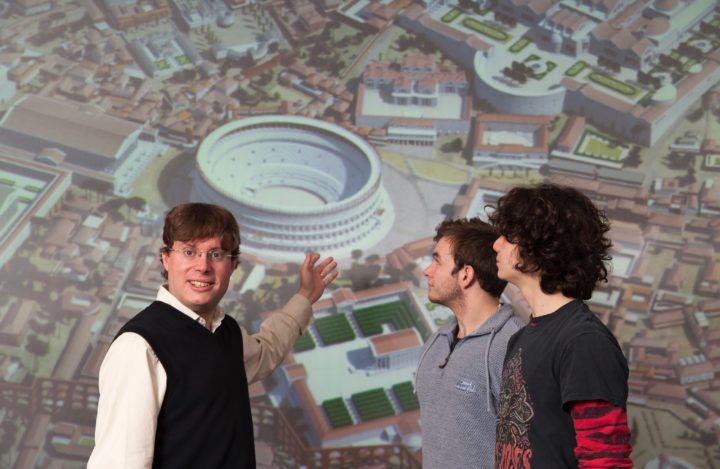A 3D computer model developed at the University of Reading is being used across the education, heritage and entertainment sectors to help audiences understand, explore and enjoy the architecture and built environment of ancient Rome.
As the home of countless famous architects throughout history, the ‘eternal city’ of Rome has long been considered the architectural capital of the world. But with ancient architecture traditionally illustrated in textbooks using black-and-white line art, it has historically been difficult to bring the city’s built environment to life.
A 3D digital reconstruction based on research by Professor Matthew Nicholls at the University of Reading is now offering a powerful new way for students and non-specialist audiences to study the architecture of ancient cities. The model, which brings together knowledge from art, history, literature and archaeology, was created using architectural software and offers a visually convincing impression of the entire ancient city of Rome.
It inspired the development by FutureLearn of a hugely successful Massive Open Online Course (MOOC), which has been accessed by more than 59,000 learners from 190 countries since 2017 and has informed course content at several leading UK universities.
The 3D model has been widely used in schools, including as part of the popular Cambridge University Schools Classics Project, where it has transformed both teachers’ and pupils’ understanding of the ancient past. It has also been used in a variety of commercial settings, informing the design of video games, television documentaries and museum exhibitions.
Nicholls’ expertise in creating and deploying the model has attracted industry partners who work in the virtual reality (VR), augmented reality (AR), visualisation, and education markets, and is being used to help students research and produce their own digital reconstructions.
Find out more
Rome: A virtual tour of the ancient city (online course)
View the full impact case study on the REF 2021 website: Digital Rome: inspiring access to Rome’s ancient architecture and history through 3D visualisations

